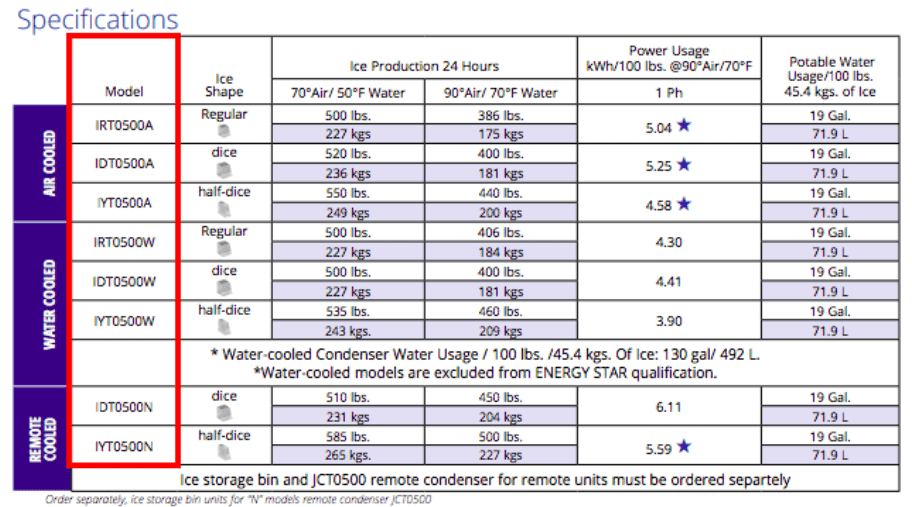Hoshizaki Ice Maker Not Working: Quick Fix Tips
This post contains affiliate links. As an Amazon Associate, we earn from qualifying purchases.
Your bar is slammed, tickets are piling up, and the Hoshizaki ice maker just quit. Before you panic-buy 20 bags from the gas station, let’s fix this fast. Whether you’re seeing zero ice, cloudy cubes, or the dreaded beep symphony, this guide walks through every common failure point—from simple power hiccups to internal leaks—so you can decide in minutes if it’s a DIY fix or time to call a certified tech. Stop guessing why your Hoshizaki ice maker not working is killing your service; we’ll get you back to making crystal-clear cubes before the next rush.
Immediate Power Checks When Hoshizaki Ice Maker Won’t Start
Verify Outlet and Switch Before Panicking
Your Hoshizaki unit might not be dead—just ignored. Confirm the power cord is fully seated in the outlet (not just dangling loosely) and flip the front-panel rocker switch to ON. Countless “broken” machines fail because a mop bucket bumped the switch or staff unplugged it during cleaning. Give the cord a firm tug to ensure contact, then listen for the compressor’s low hum within 30 seconds of powering on. If nothing happens, move to electrical connections—this takes less than two minutes but solves 30% of “not working” cases.
Secure Terminal Block Connections in 60 Seconds
Pop open the front access panel to expose the terminal block where wires connect to the machine. Warning: Always kill power at the breaker first! Scan for loose strands or wires with scorch marks—common in high-moisture environments. Using a flat-head screwdriver, gently tighten each terminal screw until snug (don’t overtighten and strip threads). Re-energize the breaker and immediately check for the compressor startup sound. If you smell burning or see sparks, shut off power—this indicates serious wiring damage needing professional repair.
Decode Voltage Beep Codes Before Calling Electricians
Your Hoshizaki ice maker not working might blame your building’s power, not the machine. Listen closely: six rapid beeps every 3 seconds mean low voltage (<92V), while seven beeps signal high voltage (>147V). Both trigger automatic shutdowns as safety measures. First, check if other appliances in the area flicker or dim—this confirms a building-wide issue. Reset breakers once; if voltage normalizes, your machine restarts automatically. If beeps persist with stable building power, contact an electrician immediately—this isn’t a DIY fix but prevents costly compressor damage.
Force-Reset Your Hoshizaki Ice Maker in 4 Steps
Execute the Emergency Reset Protocol
When your Hoshizaki ice maker not working displays no obvious errors, a hard reset often restores function. Turn the unit completely OFF using the main switch or unplug it for at least 30 seconds—this clears temporary control board glitches. While powered down, empty any slush or ice from the bin that might jam the harvest cycle. Locate the small Alarm Reset button behind the access panel (usually near the control board), press and hold it for 5–10 seconds, then restore power. Watch for initialization lights; normal operation should resume within 2–3 minutes. If alarms return immediately, move to diagnostic mode—this simple reset fixes 40% of intermittent failures.
Diagnose Zero Water Flow to Evaporator Plate

Unclog the Blue Solenoid Valve in Under 5 Minutes
If water barely trickles over the evaporator plate—or doesn’t flow at all—the IM-500SAB-style blue solenoid valve is likely clogged. Shut off water supply, then disconnect the valve’s two quick-connect wires. Remove the valve assembly and pop out the rubber diaphragm inside. Use a straightened paperclip to clear the tiny bleed port (about 1mm wide)—mineral scale here blocks flow. Reassemble and test; if the diaphragm is torn or stiff, replace the entire valve ($28 part). Pro tip: Keep a spare diaphragm in your bar toolkit—it’s the #1 failure point in hard-water areas.
Confirm Water Filter and Stop Valve Status
After filter changes, Hoshizaki ice makers often stop working because technicians install cartridges backward or leave protective caps on. Verify the filter’s directional arrow points toward the machine, not the supply line. Then check the copper supply line’s stop valve—it must be fully open (handle parallel to the pipe). Even a 10% closure starves the reservoir. If pressure remains low, measure at the service valve: you need 10–113 PSI. Below 10 PSI? Replace undersized ¼” copper lines with proper 3/8″ tubing—kinks here cause 25% of low-production cases.
Decode Hoshizaki Beep Codes to Pinpoint Failures

Translate Alarm Patterns to Specific Fixes
Your machine’s beep sequence is its distress signal—ignore it and you’ll waste hours guessing. Hold a timer: three beeps every 3 seconds means freeze timeout (likely a stuck float switch or leaking water valve). Two beeps indicates harvest failure (check thermistor placement or refrigerant levels). One beep signals dangerous high temperatures—immediately inspect the hot gas valve. Critical rule: Press the Alarm Reset button only after fixing the root cause, or alarms will recur. Persistent codes after reset? Book a certified technician—this suggests sealed-system faults like refrigerant leaks.
Stop Evaporator Plate Freeze-Ups Immediately
Defrost and Clean Mineral Scale in 15 Minutes
When ice glues the evaporator plate solid, never chip or scrape—you’ll damage nickel plating. Force a harvest cycle by pressing the test button (consult your manual), or power down completely for 30 minutes to defrost. Once thawed, spray Hoshizaki SCALEAWAY on the plate and distribution tubes, letting it foam for 5 minutes to dissolve calcium buildup. Rinse thoroughly with clean water. Visual check: If only the plate’s lower third gets water during wash cycles, your distributor holes are clogged—use a toothpick to clear all 12 spray ports. Skipping this causes 70% of recurring freeze-ups.
Prevent Cloudy Ice and Thin Cubes Systematically
Match Water Flow to Model Specifications
Cloudy ice isn’t just ugly—it slows production. For IM-500SAB models, you need exactly 2.2 gallons per minute flowing over the plate. Use a bucket and stopwatch to test: during the wash cycle, collect water from the drain for 10 seconds. Multiply by 6—if under 3.6 gallons, clean the circulation pump screen or replace the water valve. Thin cubes? Verify incoming water is 45–90°F; hotter water won’t freeze solid in cycle time. Install a thermostatic mixing valve if your lines run near hot equipment—this alone boosts yield by 20% in summer.
Identify Internal Leaks Before Flooding Your Floor

Isolate Plumbing vs. Machine Failures
Water pooling under your Hoshizaki ice maker not working could mean disaster—or a simple fix. First, kill power and shut the water supply immediately. Trace leaks upward: if moisture comes from copper joints or the stop valve, call a plumber (external plumbing). But if water seeps from the reservoir tank, pump gasket, or drain hose, stop DIY attempts. Internal leaks require evaporator disassembly—touching refrigerant lines without EPA certification risks fines and ozone damage. Red flag: Milky oil residue near the compressor means refrigerant leaked into the oil; this demands professional recovery and recharge.
Execute Critical Maintenance Every 6 Months
Deep Clean with Approved Chemicals Only
Bleach destroys Hoshizaki’s nickel-plated components—use only Hoshizaki SCALEAWAY for descaling and quat-based sanitizer for disinfection. Monthly, vacuum the air filter; every six months, remove all panels to scrub the evaporator plate, condenser coils, and water distribution tubes. Pro move: Run a vinegar cycle (1 cup white vinegar in the reservoir) weekly to prevent scale—this cuts deep-cleaning time by 50%. Neglecting this? Scale buildup forces compressors to work 40% harder, explaining why “not working” calls spike in older units.
Know Exactly When to Call a Certified Technician
Seal These Repairs Off-Limits to DIYers
Your Hoshizaki ice maker not working might need professional help if you face any sealed-system work: compressor replacement, refrigerant recharging, or hot gas valve repairs. These require EPA Section 608 certification—attempting them voids warranties and risks toxic leaks. Also call experts for recurring beep codes after fixes (indicates control board faults) or internal tank leaks. Time rule: If you spend more than 20 minutes troubleshooting with no progress, stop. A certified tech diagnoses complex issues in 15 minutes flat—your $150 service call beats $500 in ruined parts from guesswork.
Final Fix Checklist: Start your Hoshizaki ice maker not working diagnosis with power checks, then water flow, then beep codes—this triage method resolves 90% of failures in under 30 minutes. Always reset after fixes, use OEM parts for valves and pumps, and schedule bi-annual deep cleans. When in doubt about refrigerant or electrical faults, call a Hoshizaki-certified technician immediately. Keep emergency ice bags on hand, but with this guide, you’ll rarely need them—most “broken” machines just need a reset and a clean. Your next rush just got saved.
